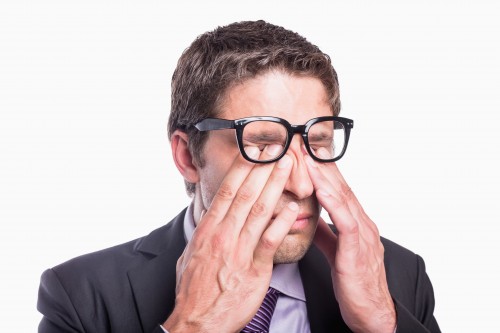About Dry Eye Disease
At Eyes For Life, we offer our patients a state-of-the-art Dry Eye Relief Clinic, specializing in the evaluation, diagnosis and treatment of Dry Eye Disease.

Chronic dry eye is called Dry Eye Disease, or also known as Dry Eye Syndrome.
Dry eye has a wide range of causes and expressed symptoms, but the general cause of dry eye is an interruption in the quality of tears, or lubrication, necessary for proper protection and eye function. Your eye doctor can assess the underlying cause of your dry eye and determine if it is a chronic condition.
Dry Eye Disease (DED) is an ongoing and sometimes progressive dry eye condition. ‘Dry eye’ does not mean that your eye is dry, as we would normally understand it. Rather, ‘dry eye’ is a common term used to indicate an issue with one’s tear film, the normal tear covering of the eye. (For more information on the tear film click here.) Dry eye has a wide range of causes and expressed symptoms, but the general cause of dry eye is an interruption in the quality of the tear film, or lubrication, necessary for proper protection and eye function.
This tear film disruption can cause symptoms such as burning, itching, redness, dryness, eye pain and scratching. The scratchy feeling is also sometimes described as grit or an indistinguishable object in one’s eye. Your eye doctor would refer to this as a ‘foreign body’ sensation. Other symptoms can include sensitivity to light, eye fatigue and blurred vision.
Eyes that are watery and tear easily or continually are also symptomatic of Dry Eye Disease. This over-tearing is referred to as ‘reflex tearing,’ and is your body’s way of compensating in order to protect your eye. Without proper lubrication and moisture, your eye can move from irritation to inflammation to infection. If left untreated, Dry Eye Syndrome can even lead to scarring the cornea, or the outermost layer of the eye. Damage to the ocular surface may result in redness, pain, infection and increased sensitivity to light.
Your eye doctor may administer a survey of your symptoms along with specific evaluations to determine the cause of your dry eye. Since there can be more than one cause, your doctor will advise a treatment plan unique to your eye needs. Following his or her recommendation is essential for successful treatment. Be sure to observe your eyes’ responses to the treatment and inform your eye doctor of any changes.
For most patients, following the prescribed Dry Eye Relief Plan will result in an alleviation or reduction of symptoms, an increase in comfort and often improved visual clarity. In some severe cases, however, dry eye disease may not be completely curable. Dry Eye Relief Management is an important process to ensure the success of your treatment.
Contact our office for more information about Dry Eye Relief Management or call (509) 448-7300 to schedule an evaluation today!
Learn more with the links below:
- Dry Eye Disease: Symptoms
- Dry Eye Disease: Evaluations
- Dry Eye Disease: Treatments
- Top 5 Q&A: Dry Eye Disease